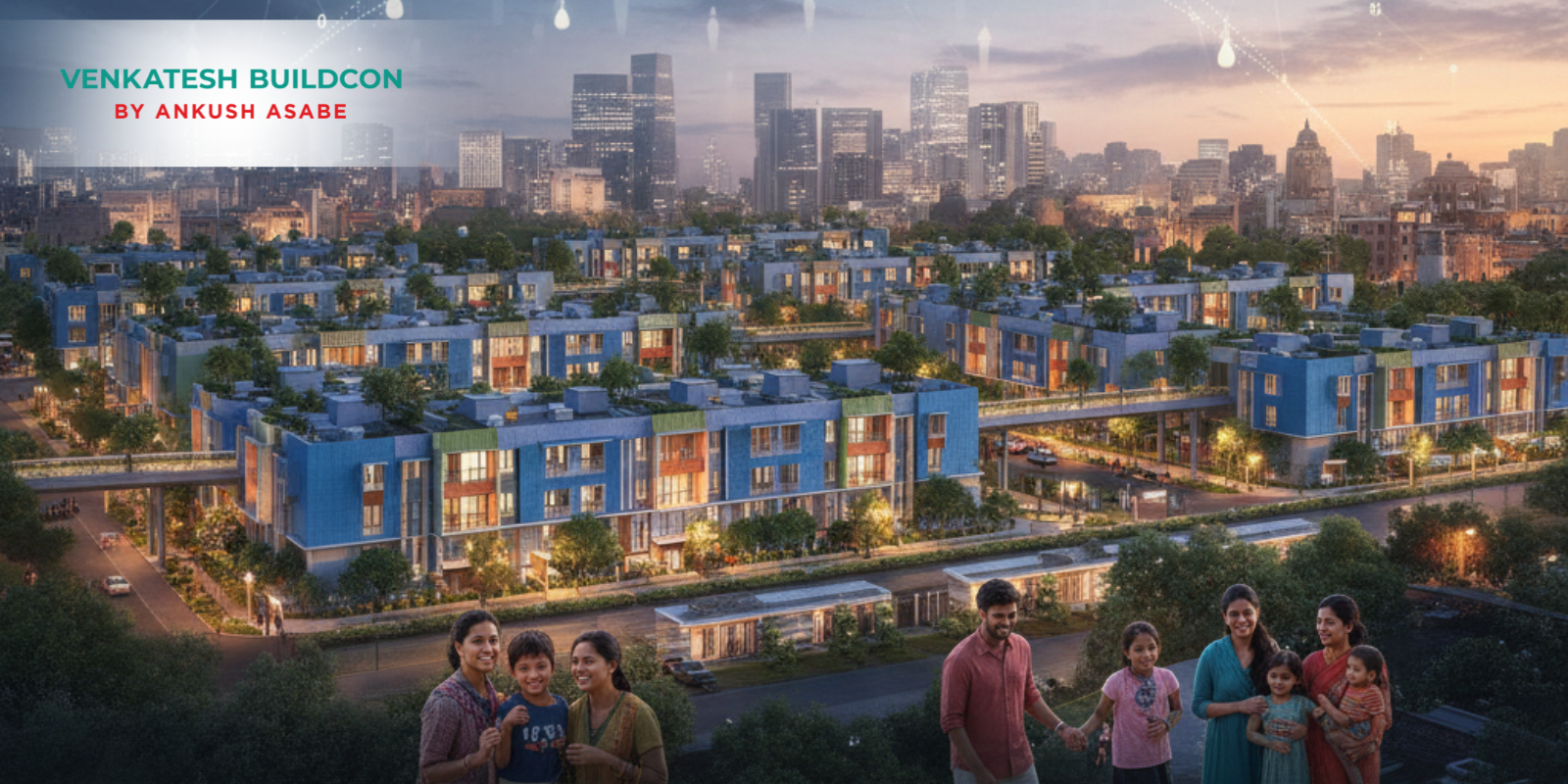Urban India is undergoing a transformation, driven not just by luxury developments but increasingly by affordable housing. As cities expand and populations grow, accessible residential options are crucial for inclusive urban development. For buyers looking to buy home in Pune or invest in residential property in Pune, understanding trends in the affordable segment offers both practical and financial insights.
1. Government-backed Housing Schemes and Their Impact
The Indian government has actively promoted affordable housing through initiatives such as Pradhan Mantri Awas Yojana (PMAY) and state-level schemes that incentivize developers while making homeownership viable for middle- and lower-income segments. These programs offer benefits such as interest subsidies, tax incentives, and priority allocation of land, making housing more accessible.
The real-world impact is significant. Cities like Pune have witnessed a surge in mid- and low-tier residential projects, particularly in peripheral zones such as Wagholi, Hinjewadi, and Undri. The availability of 3 BHK apartments and 4 BHK apartments under these schemes has widened the market for first-time buyers, enhancing urban inclusion while driving sustainable growth.
Developers such as Venkatesh Buildcon have aligned with these policies, ensuring that housing Pune is not just affordable but also maintains quality standards, timely delivery, and connectivity, reinforcing buyer confidence in emerging micro-markets.
2. Key Price Trends in Affordable Segments Across Indian Metros
The affordability segment has witnessed robust activity in recent years. According to the CREDAI–Colliers report, affordable housing accounted for 38% of new launches in 2023, highlighting its dominance in urban residential portfolios.
In Pune, affordable units are typically priced between ₹35–60 lakh for 2–3 BHK apartments, making them accessible to salaried professionals and first-time homeowners. Peripheral areas connected by metro and highways have seen steady price appreciation of 5–8% annually, reflecting both demand and infrastructural development.
Other major metros also display similar patterns:
- Mumbai Metropolitan Region (MMR): Peripheral affordable units in Thane, Panvel, and Kalyan have appreciated by 6–9% annually.
- Bengaluru: Affordable apartments near Whitefield and Sarjapur corridors are witnessing 7–10% yearly growth due to IT-driven demand.
- Hyderabad & Chennai: Peripheral affordable sectors show 5–8% appreciation, aided by industrial expansion and better connectivity.
For buyers and investors, this trend indicates that affordable housing is not just a social initiative but a viable investment segment, with steady capital gains and rental demand, particularly in mid-sized and rapidly growing zones.
3. Future Potential for Affordable Housing Investors in Tier-2 Cities
While metros like Pune, Mumbai, and Bengaluru continue to dominate, Tier-2 cities present enormous potential. Cities such as Pune’s satellite towns, Indore, Jaipur, and Coimbatore are witnessing industrial growth, IT parks, and infrastructure investments that support affordable housing demand.
Investors looking at property in Pune to buy or similar Tier-2 markets can capitalize on:
- Lower land acquisition costs, which enhance project feasibility.
- Government incentives, including lower stamp duties and PMAY benefits.
- Growing urban migration, fueling demand for mid-sized housing Pune projects.
- High rental yield potential, as affordability attracts young professionals and families.
These dynamics suggest that affordable residential projects in emerging cities will continue to attract interest from developers and investors alike.
4. Venkatesh Buildcon’s Role in Affordable Housing
A leading real estate company in Pune, Venkatesh Buildcon exemplifies how developers can combine affordability with quality. By selecting strategic locations with strong connectivity, emphasizing project completion timelines, and offering modern amenities, the company ensures that homes in Pune for sale are accessible without compromise.
Their approach demonstrates that affordable housing can be both profitable and socially responsible, providing long-term value to both buyers and investors.
Conclusion
Affordable housing is reshaping India’s urban landscape, balancing inclusivity with investment potential. With government support, strategic infrastructure, and committed developers, cities like Pune are seeing sustainable growth in residential property, attracting both first-time buyers and investors.
For those seeking the best housing projects in Pune or top properties in Pune, understanding the nuances of the affordable segment—its pricing, location, and growth potential—can help make informed decisions, ensuring that urban living remains within reach while offering sound returns in India’s evolving real estate market.
 Residential
Residential
 Ongoing
Ongoing
 Completed
Completed Upcoming
Upcoming Commercial
Commercial





